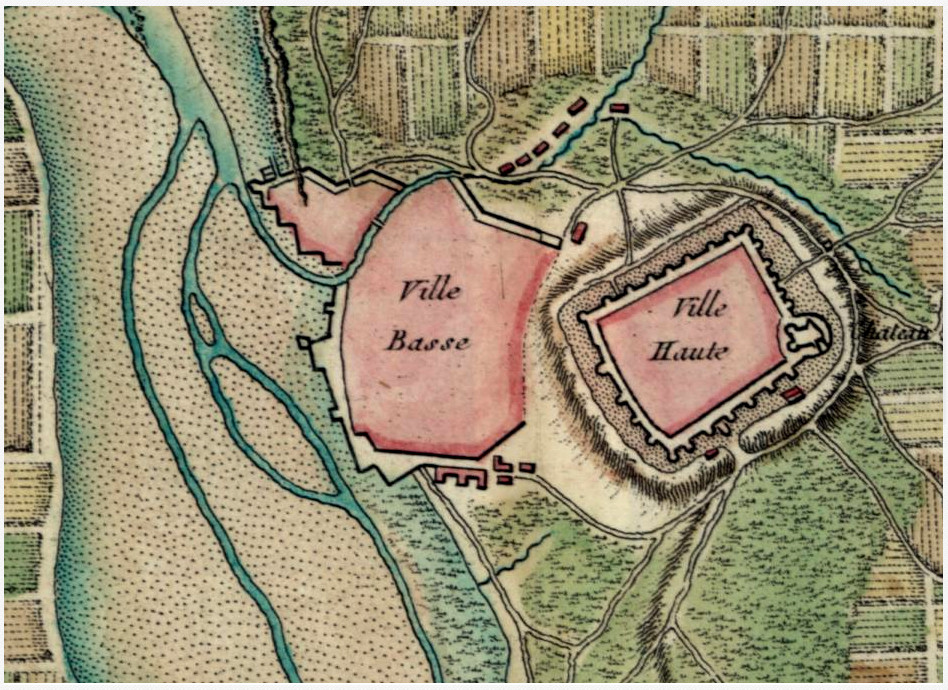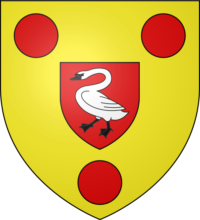Boulogne-sur-Mer
[[]]
Contents
Quote
Appearance
Climate
Boulogne-sur-Mer has chilly winters not far above freezing and cool summers tempered by its exposure to the sea. Considering its position, the climate is quite cold in relation to south and east coast locations in England year round. Precipitation is also higher than in said southern English locations.
Coat of Arms
Economy
- Fishing (primarily herring, both salted and brined)
- Smuggling (all sorts of contraband between England and France)
- Whaling (Whale oil and ivory fetch excellent prices throughout Europe)
Geography

Boulogne-sur-Mer is in Northern France, at the edge of the English Channel and in the mouth of the river "Liane". As the crow flies, Boulogne is approximately at 19 miles from Calais, 31 miles from Folkestone - England, 62 miles from Lille and Amiens, 93 miles from Rouen and 134 miles from Paris.
Boulogne is a relatively important city of the North, exercising an influence on the "Boulonnais" territory (of numerous towns and villages which surround Boulogne). The coast consists of the capes Gris Nez and Blanc Nez (which are the closest points of France to England), and a lighthouse. The hinterland consists of slowly expanding farms surrounded by an ancient and extensive Old World forest.
History
Origin of the city
The foundation of the city known to the Romans as Gesoriacum is credited to the Celtic Boii. In the past, it was sometimes conflated with Caesar's Portus Itius, but that is now thought to have been a site near Calais which has since silted up. From the time of Claudius's invasion in AD 43, Gesoriacum formed the major port connecting the rest of the empire to Britain. It was the chief base of the Roman navy's Britannic fleet until the rebellion of its admiral Carausius in 286. As part of the imperial response, the junior emperor Constantius Chlorus successfully besieged it by land and sea in 293. The name of the settlement was changed to Bononia at some point between the sack of Gesoriacum and 310, possibly as a consequence of its re-founding or possibly by the replacement of the sacked and lower-lying city by another nearby community.
The city was an important town of the Morini, and Zosimus called it Germanorum ("Germanic-speaking") at the end of the 4th century.
Middle Ages
In the Middle Ages Boulogne was the capital of an eponymous county, founded in the mid-9th century. An important Count, Eustace II, assisted William the Conqueror in his conquest of England. His wife founded the city's Notre Dame cathedral, which became a site of pilgrimage from the 12th century onwards, attended by fourteen French kings and five of England. It was an important whaling center prior to 1121. The city survived on herring fishing and received its municipal charter from Count Renaud of Dammartin in 1203.
Current Events
Population
- -- City (0) - Dated census
Citizens of Boulogne-sur-Mer
- [[]] --
Cemeteries
Fortifications
- Medieval walls 1,500 metres long, with 4 gates and 17 towers.
- Medieval castle, whose foundations date to Roman times.
Holy Ground
Churches
Convents
Inns
Law & Lawlessness
Monuments
Private Residences
Taverns
Boulogne-sur-Mer
Hauts Clans
- [[]] -- '
- [[]] -- '
- [[]] -- '
Clans Bas
- [[]] -- '
- [[]] -- '
Whore Houses
Websites
https://en.wikipedia.org/wiki/Boulogne-sur-Mer
https://en.wikipedia.org/wiki/Eustace_III,_Count_of_Boulogne (Crusader)
